- Home
- Quizzes
- My Quiz Activity
- Newsletters
- Sports Betting
- MY FAVORITES
- Add Sports/Teams
- SPORTS
-
NFL
- NFL Home
- Arizona Cardinals
- Atlanta Falcons
- Baltimore Ravens
- Buffalo Bills
- Carolina Panthers
- Chicago Bears
- Cincinnati Bengals
- Cleveland Browns
- Dallas Cowboys
- Denver Broncos
- Detroit Lions
- Green Bay Packers
- Houston Texans
- Indianapolis Colts
- Jacksonville Jaguars
- Kansas City Chiefs
- Las Vegas Raiders
- Los Angeles Chargers
- Los Angeles Rams
- Miami Dolphins
- Minnesota Vikings
- New England Patriots
- New Orleans Saints
- New York Jets
- New York Giants
- Philadelphia Eagles
- Pittsburgh Steelers
- San Francisco 49ers
- Seattle Seahawks
- Tampa Bay Buccaneers
- Tennessee Titans
- Washington Commanders
-
MLB
- MLB Home
- Arizona Diamondbacks
- Atlanta Braves
- Baltimore Orioles
- Boston Red Sox
- Chicago White Sox
- Chicago Cubs
- Cincinnati Reds
- Cleveland Guardians
- Colorado Rockies
- Detroit Tigers
- Houston Astros
- Kansas City Royals
- Los Angeles Angels
- Los Angeles Dodgers
- Miami Marlins
- Milwaukee Brewers
- Minnesota Twins
- New York Yankees
- New York Mets
- Oakland Athletics
- Philadelphia Phillies
- Pittsburgh Pirates
- San Diego Padres
- San Francisco Giants
- Seattle Mariners
- St. Louis Cardinals
- Tampa Bay Rays
- Texas Rangers
- Toronto Blue Jays
- Washington Nationals
-
NBA
- NBA Home
- Atlanta Hawks
- Boston Celtics
- Brooklyn Nets
- Charlotte Hornets
- Chicago Bulls
- Cleveland Cavaliers
- Dallas Mavericks
- Denver Nuggets
- Detroit Pistons
- Golden State Warriors
- Houston Rockets
- Indiana Pacers
- Los Angeles Clippers
- Los Angeles Lakers
- Memphis Grizzlies
- Miami Heat
- Milwaukee Bucks
- Minnesota Timberwolves
- New Orleans Pelicans
- New York Knicks
- Oklahoma City Thunder
- Orlando Magic
- Philadelphia 76ers
- Phoenix Suns
- Portland Trail Blazers
- Sacramento Kings
- San Antonio Spurs
- Toronto Raptors
- Utah Jazz
- Washington Wizards
-
NHL
- NHL Home
- Anaheim Ducks
- Arizona Coyotes
- Boston Bruins
- Buffalo Sabres
- Calgary Flames
- Carolina Hurricanes
- Chicago Blackhawks
- Colorado Avalanche
- Columbus Blue Jackets
- Dallas Stars
- Detroit Red Wings
- Edmonton Oilers
- Florida Panthers
- Los Angeles Kings
- Minnesota Wild
- Montreal Canadiens
- Nashville Predators
- New Jersey Devils
- New York Islanders
- New York Rangers
- Ottawa Senators
- Philadelphia Flyers
- Pittsburgh Penguins
- San Jose Sharks
- Seattle Kraken
- St. Louis Blues
- Tampa Bay Lightning
- Toronto Maple Leafs
- Vancouver Canucks
- Vegas Golden Knights
- Washington Capitals
- Winnipeg Jets
- NCAAF
- NCAAM
- Boxing
- Entertainment
- Lifestyle
- Golf
- MMA
- Soccer
- Tennis
- Wrestling
- More Sports
- RESOURCES
- My Account
- YB on Facebook
- YB on Twitter
- YB on Flipboard
- Contact Us
- Privacy Policy
- Terms of Service
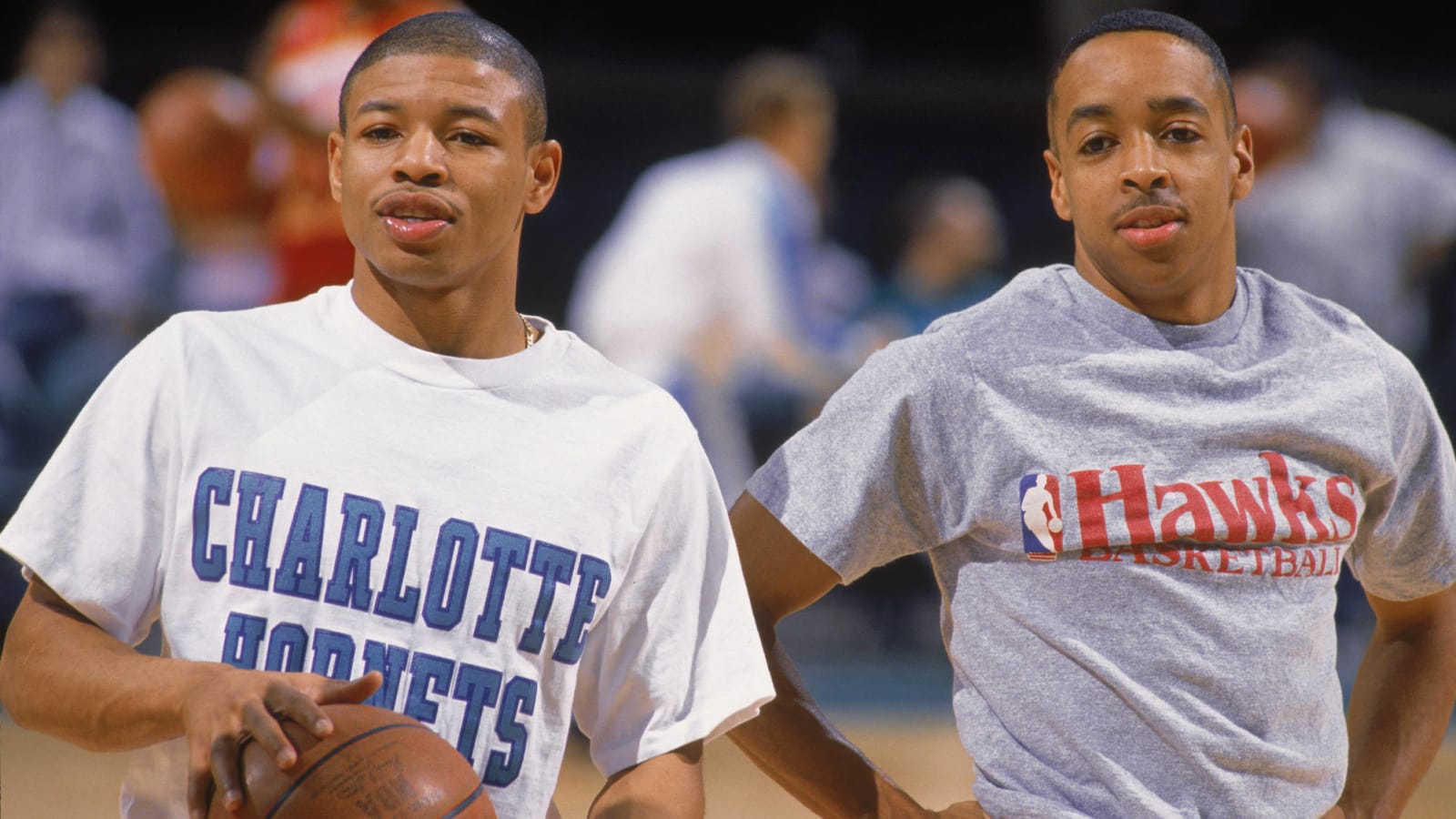
Thousands upon thousands of basketball courts are located throughout North America. Thanks to indoor gyms, outdoor spots, driveways and other venues, one probably doesn’t have to travel too far to find a place to hoop. At the moment you’re reading this sentence, some young boy or girl is fantasizing of hitting a walk-off shot to win a national championship or professional title. The odds tell us that the same individual will one day run into the realization he or she isn’t growing beyond a certain height deemed desirable by top-division NCAA coaches.
Kids doomed to never stand beyond 5-foot-11 who don’t know any better may pretend to be Stephen Curry or LeBron James during games and practices and can find inspiration in the fact that two dozen individuals earned NBA contracts even though they never hit 5-foot-10 with their shoes off. Several players on the list of the shortest athletes in NBA history (as of 2020) became icons of the sport, and one even made it into the Naismith Memorial Basketball Hall of Fame.
Keep shooting, shorter young bloods. There’s hope for you, yet.
Kay Felder

The 5-foot-9 point guard Kay Felder declared for the 2016 NBA Draft a year early after he broke the Horizon League record for career assists with Oakland University. The Cleveland Cavaliers secured his rights in the second round of the player selection process, but they traded him in October 2017 after he made only 42 regular-season appearances with the club. He failed to find long-term homes with the Atlanta Hawks, Chicago Bulls or Detroit Pistons, and he moved on to the Chinese Basketball Association in 2019. He remained in the CBA through early 2020.
Isaiah Thomas
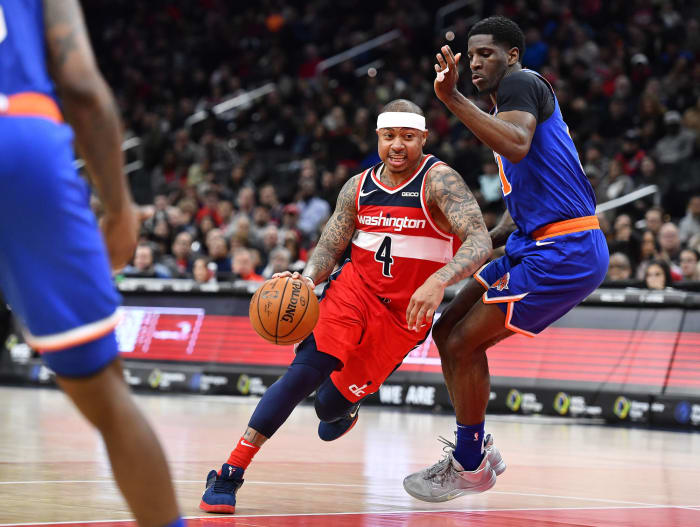
Like many giants of the game, diminutive guard Isaiah Thomas lost years of his prime because of injury. With the Boston Celtics, the 5-foot-9 IT4 earned spots on the 2016 and 2017 NBA All-Star squads, and Thomas was All-NBA Second Team for the 2016-17 season. His gutsiest and most heroic performance occurred during the 2017 NBA Playoffs when he guided the C’s to a postseason win over the Chicago Bulls after his sister tragically died in a car accident the day before the series opener. A hip problem nagged Thomas that spring and prematurely ended his playoff run. Little did we know at the time his career would never be the same. Following forgettable stints with the Cleveland Cavaliers, Los Angeles Lakers and Denver Nuggets, Thomas is attempting to reclaim his MVP form with the Washington Wizards during the 2019-20 campaign.
Yuta Tabuse
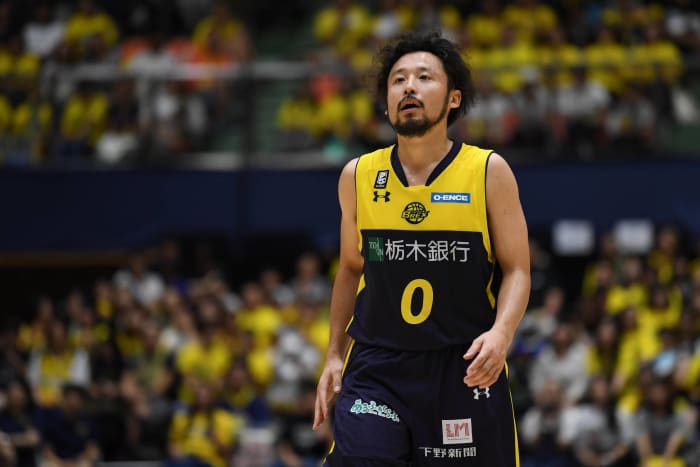
If 5-foot-9 guard Yuta Tabuse finished a figurative cup of coffee as an NBA player, that drink being a tall beverage, at most. Tabuse’s name nevertheless will forever be in Association record books because he became the first Japanese-born individual to play in a league regular-season game, in November 2004 . After only three more appearances, the Phoenix Suns waived Tabuse in December. He floated around the Developmental League through 2008, but he never returned to the NBA. Tabuse ultimately returned to Japan, and he won the 2010 JBL Finals MVP award.
Gene Rock
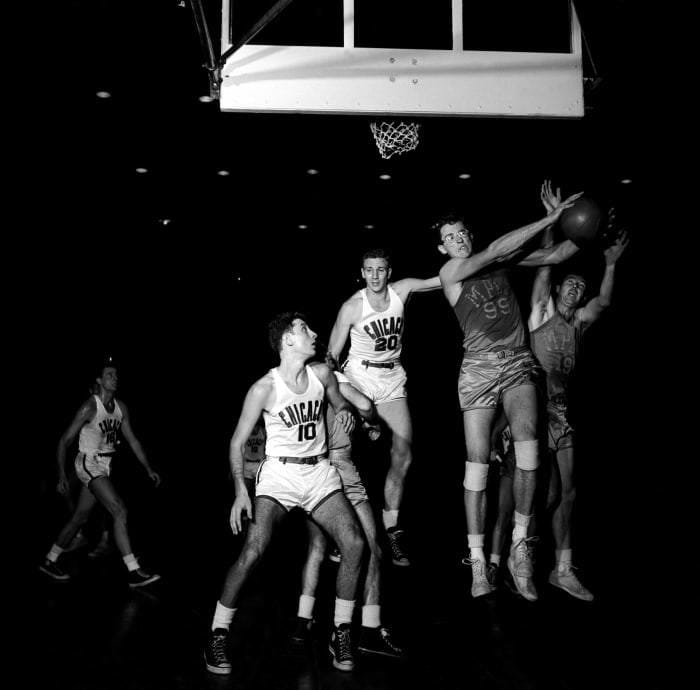
Per the USC Trojans website, 5-foot-9 forward Gene Rock served in the Marines between stints at the university during the 1940s. He was named USC MVP in 1947, and he went on to play for the Birmingham Skyhawks of the Professional Basketball League of America and, later, for the Chicago Stags of the Basketball Association of America, a competition that preceded the NBA. Later in his life, the southpaw became a captain of the Los Angeles Police Department.
Ralph O'Brien

As David Woods of the Indianapolis Star wrote, only two men who featured for Butler University spent more than a single season in the NBA between 1953 and 2010: Gordon Hayward, and Ralph O’Brien. Per Woods, O’Brien, nicknamed “Buckshot,” exaggerated his height beyond 5-foot-9 to attract attention, and he played in 119 career NBA games from 1951 through 1953. He averaged 7.1 PPG, 1.6 REB, and 1.5 AST across those contests. According to Woods, O’Brien became a successful insurance agent following his basketball career, and he was married for 68 years before his passing in 2018.
Nate Robinson

In April 2016, 5-foot-9 guard Nate Robinson told Bleacher Report he believed he was “one of the greatest short guys to ever play the game.” A first-round selection from the 2005 NBA Draft, Robinson made appearances in every season from his rookie year through the 2015-16 campaign. He never earned an All-Star nod or a ring in the Association, but he became the first three-time slam dunk champion in 2010. Although he had been out of the NBA for several years at the end of the decade, Robinson informed Sports Illustrated in late 2019 he was still NBA-ready at the age of 35.
Angelo Musi

In October 2007, Sports Illustrated named Angelo Musi among the best 5-foot-9 pro and college players in recorded history. Between 1946 and 1949, Musi appeared in 161 games for the Philadelphia Warriors of the BAA, and he was part of the Warriors squad that won the league title in 1947. Despite his lack of size, he was his side’s second-leading scorer during that championship campaign. Musi was an excellent two-sport athlete — basketball and baseball — in college and is in the Temple Athletics Hall of Fame.
Calvin Murphy

No disrespect meant to Nate Robinson, but Calvin Murphy is the greatest “short guy” in NBA history as of the start of the 2020s. The first 5-foot-9 player to appear in an All-Star Game, which he did in 1979, (the previously mentioned Isaiah Thomas later accomplished this feat in 2016), Murphy was named NBA First-Team All-Rookie for the 1970-71 campaign, and he held the record for highest free-throw percentage for a season (95.81 percent in 1980-81) until Jose Calderon buried over 98 percent of his attempts from the charity stripe in 2008-09. The Hall of Fame came calling for Murphy in 1993, and he was still the shortest enshrined NBA player as of January 2020. He was also a champion baton-twirler as a teenager.
Ed Melvin

Per an old Pittsburgh Post-Gazette, the basketball player and coach known as Ed Melvin legally changed his last name from Edward Milkovich as an adult. During the 1946-47 BAA season, Melvin/Milkovich appeared in 57 contests with the Pittsburgh Ironmen, and the 5-foot-9 guard averaged 4.9 PPG over those outings. He then went on to coach at St. Bonaventure, and his program won three consecutive regular-season titles from 1950 through 1952. He accumulated winning coaching records with St. Bonaventure (1947-1953) and Toledo (1954-65).
Lionel Malamed
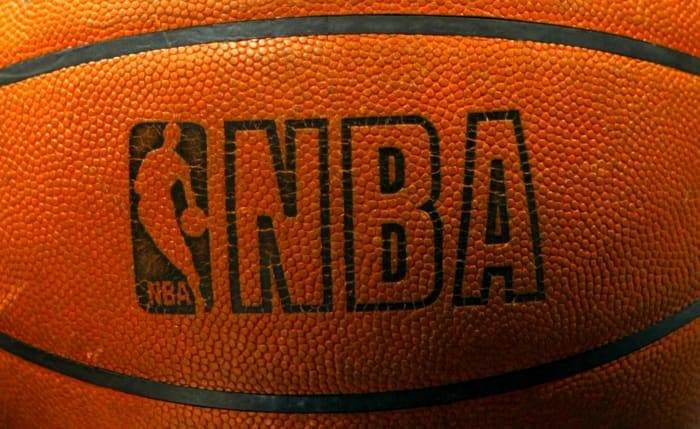
In 1985, Steve Jacobson of Newsday (h/t Los Angeles Times) recalled a time when college basketball was a marquee sport in New York City throughout the 1940s and 1950s. The 5-foot-9 guard Lionel Malamed featured for City College of New York during that era before he embarked upon a brief career in the BAA. For the 1948-49 campaign, Malamed played with the Indianapolis Jets and Rochester Royals. In 44 games, the product of New York, New York, averaged 5.9 PPG and 1.4 AST. Per The New York Times archives, he left basketball to work on Wall Street after that season, and he later became a vice president of Herbert Young & Company.
Charlie Hoefer

According to a piece written by Christian Woop for German magazine Der Spiegel (translated) in 2019, 5-foot-9 guard Charlie Hoefer was the first German-born man to play professional basketball in the United States. That same year, The Canadian Press noted Hoefer featured for BAA club the Toronto Huskies during its inaugural campaign. That same season, Hoefer made the move to the Boston Celtics, and he appeared in 42 total games for that team through the end of the 1948 season. He averaged 5.6 PPG in 65 career contests. Per Der Spiegel and Peach Basket Society, Hoefer worked for the Department of Agriculture following his playing days.
Howie Carl
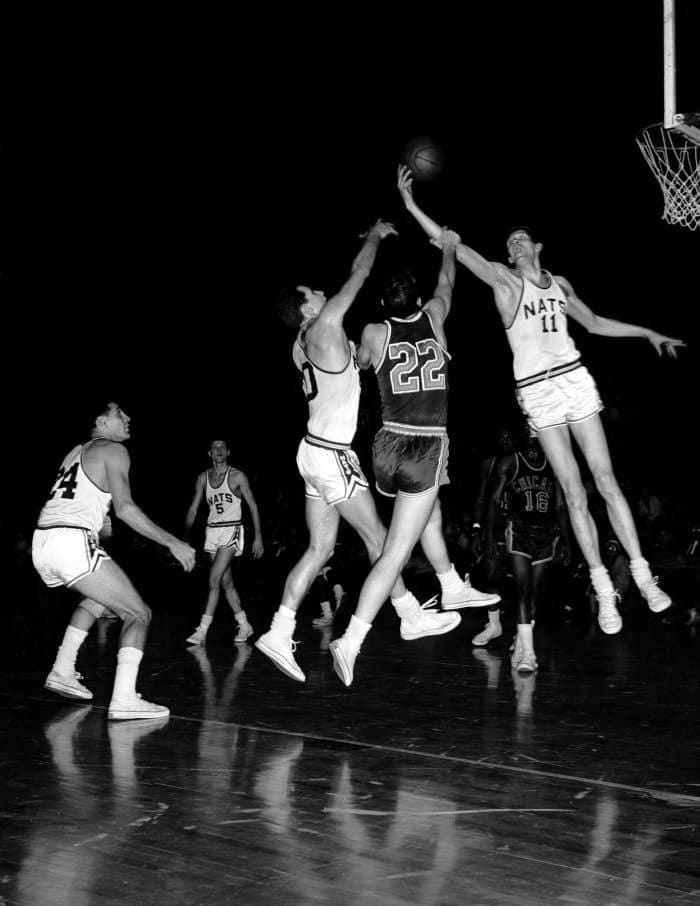
After Howie “Hershey” Carl died in October 2005, Bill Jauss of the Chicago Tribune eulogized the guard who was 5-foot-9 and 160 pounds as a pro. Carl made his name at DePaul University in Chicago, and he exited the school second in career scoring at the time behind Hall of Famer and legend George Mikan, who, ironically, was one of the sport’s giants of the era. Carl’s NBA career wasn’t as noteworthy. He featured for the Chicago Packers during the 1961-62 season, and he averaged 5.5 PPG and 1.8 AST in 31 appearances. Per Jauss, Carl worked at the Chicago Mercantile Exchange following his pro career.
Willie Somerset

A 5-foot-8 guard out of Pennsylvania, guard Willie Somerset first became a basketball star at Duquesne University in Pittsburgh. Natalie Fiorilli of The Duquesne Duke explained Somerset set school records for most points scored across three seasons (1,725), highest PPG average (22.7) and for becoming the first player to notch at least 30 points in a game on 16 occasions. Following a five-game stint in the NBA with the Baltimore Bullets during the 1965-66 season, Somerset joined the American Basketball Association side with the Houston Mavericks for the 1967-68 campaign. He also featured for the New York Nets in 1968-69. In 135 ABA contests, Somerset averaged 22.8 PPG, 4.7 REB, and 3.7 AST. He was fifth in the league in PPG (23.8) for 1968-69, when he was named an All-Star.
Dino Martin

Not to be confused with the famous singer who also possessed the memorable nickname, this Dino (Don) Martin was a 5-foot-8 player born in Newport, Rhode Island, who was a forward for the Georgetown Hoyas and who, per The Washington Post, was one of the first three players from the university to play at the professional level. Between 1946 and 1948, Martin appeared in 92 games for BAA team the Providence Steamrollers. After a stellar rookie year, during which he averaged 12.2 PPG, his scoring dipped to under four points per outing. After he left the league, he tallied a coaching record of 109-102 over nearly a decade of work at Boston College, as mentioned by Coaches Database.
Charlie Criss
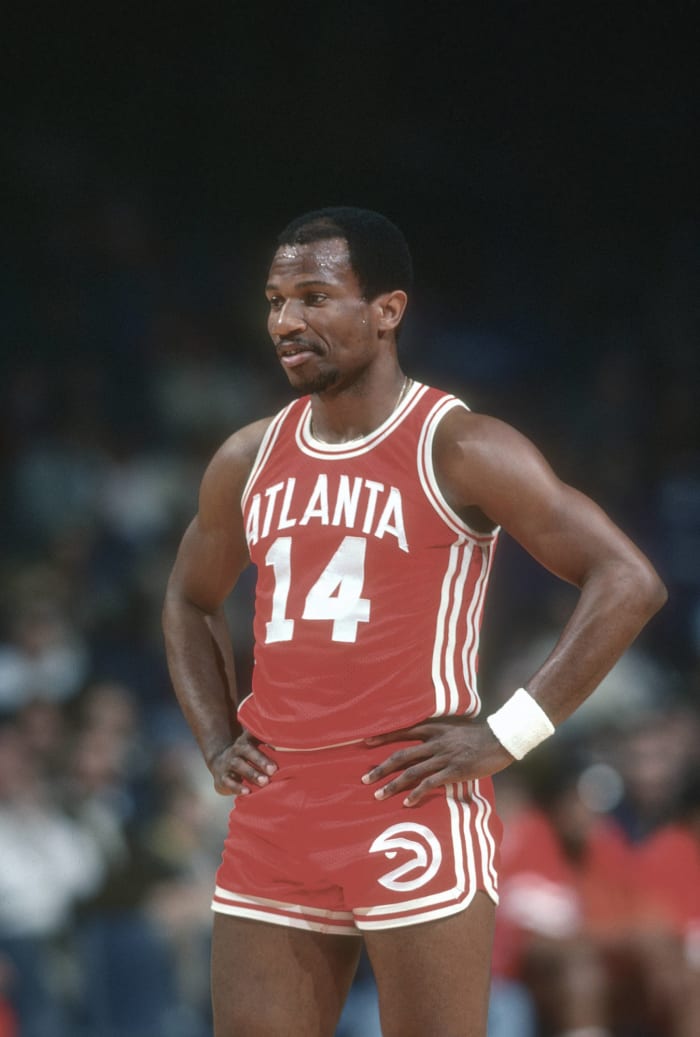
According to Paul Attner of The Washington Post, 5-foot-8 point guard Charlie Criss was the shortest player in the NBA when he joined the Atlanta Hawks for the 1977-78 season. At 28 years old, he was also the league’s oldest rookie guard ever as of that time. During his debut campaign, he averaged 11.4 PPG, 3.8 AST, and a career-best 1.4 STL. While he never again put together as impressive an overall season, he remained in the league and with the Hawks through the first few months of 1985. Per Kevin Chouinard of NBA.com, Criss worked as a Hawks commentator, a director of youth golf for the City of Atlanta and an assistant coach of a high school squad after his retirement.
Spud Webb
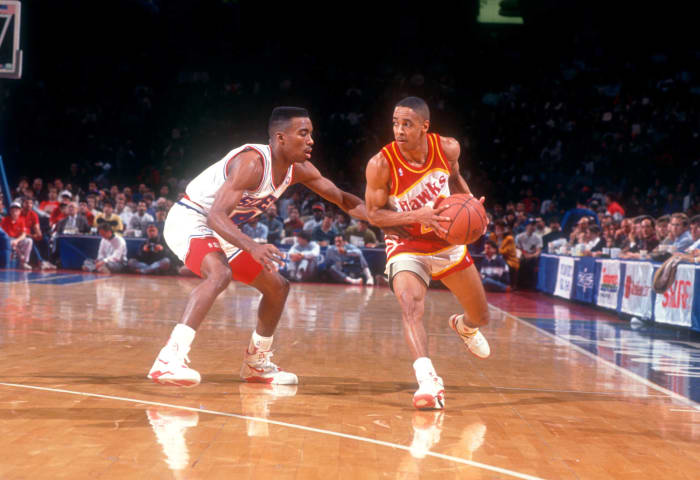
The season after Charlie Criss played out the last days of his contract with the Atlanta Hawks, a 5-foot-7 guard named Anthony Jerome “Spud” Webb joined the organization. What’s often forgotten is Webb produced his best individual seasons with the Sacramento Kings when he averaged 13.7 PPG and 6.7 AST, both above his career averages, between 1991 and 1995. Instead, fans remember watching him soar while wearing Atlanta jerseys and the time he became the shortest player to win a slam dunk contest, which he did in 1986. Webb’s assaults of rims made him a perfect star for multiple advertising campaigns, as he gave hope to adolescents who realized they’d never grow to be the next Michael Jordan. The one-time dunk champion was also an inspiration to those who followed in his footsteps. Decades later, Webb trained Nate Robinson for the contest, per ThePostGame, and Robinson honored Webb by dunking over the Atlanta legend.
Monte Towe

The name Monte Towe probably doesn’t ring a bell to those not exceedingly familiar with pro basketball history. The 5-foot-7 guard appeared in only 115 combined ABA and NBA contests from 1975 through the spring of 1977, and he averaged 2.8 PPG and 1.9 AST over that period. As Ron Morris of The News & Observer and others have described, Towe and David Thompson are credited with creating the beloved alley-oop pass and dunk while playing for NC State. During the 1972-73 college season, NC State coaches made the play a pivotal part of the team’s offense, and it gained fame from there.
Wataru Misaka
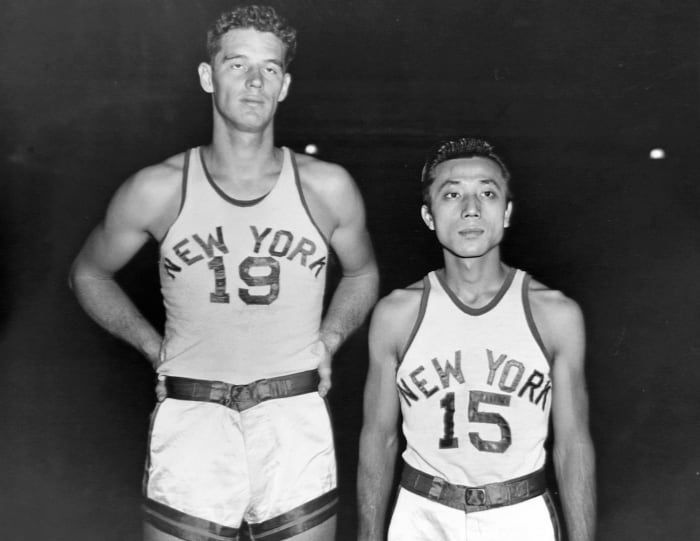
Along with being among the shortest players to ever play professionally in North American leagues, Wataru “Kilowatt” Misaka was the first person of Asian descent to play in the BAA/NBA and also the league’s first non-white athlete, per ESPN’s Jared Zwerling . Misaka helped the University of Utah win a pair of titles during the 1940s, and he spent time serving in the US Army between those title campaigns. The 5-foot-7 guard joined the New York Knicks in 1947, but he appeared in only three games for the franchise before he was released. He returned to Utah to work as an electrical engineer.
Red Klotz

As a BAA player with the Baltimore Bullets, Louis Herman “Red” Klotz made little (pun intended) impact on the history of the league. The 5-foot-7 guard appeared in only 11 contests, and he averaged fewer than two points per game. However, the Bullets won the title that year, which made him a one-time league champion in the process. His biggest contribution to basketball lore was his founding of the Washington Generals, the team built to repeatedly lose to the Harlem Globetrotters. On Jan. 5, 1971, Klotz hit a game-winner vs. the Globetrotters for his New Jersey Reds (an alias of the Generals) at the age of 50. In March 2007, he became the first non-Globetrotter to be placed in the organization’s Legends “ring.”
Keith Jennings
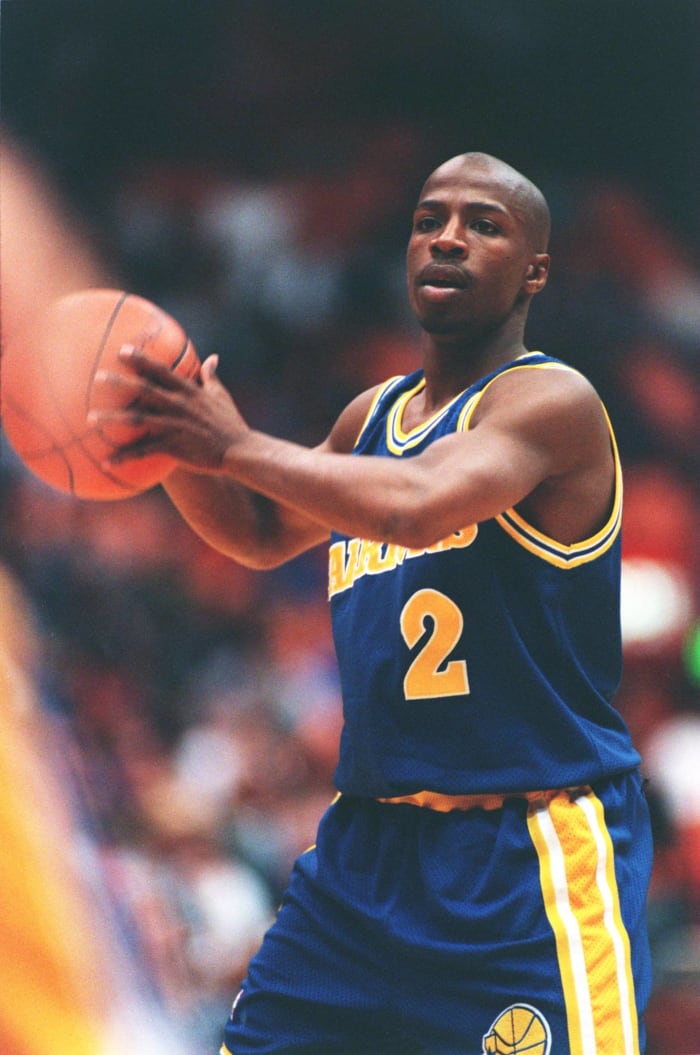
As noted by the Lees–McRae College Athletics website, 5-foot-7 guard Keith Jennings won Southern Conference Player of the Year and the Southern Conference Tournament MVP award while playing for East Tennessee State University during the 1990-91 college season. He also led the country in three-point shooting (59 percent) that year. Jennings first appeared for the Golden State Warriors in November 1992, and he played in 164 games for the franchise across three different seasons. He shot over 37 percent from distance as a pro and averaged 6.6 PPG and 3.7 AST. “Mister” was named head coach of the Lees–McRae women’s basketball team in July 2017.
Greg Grant
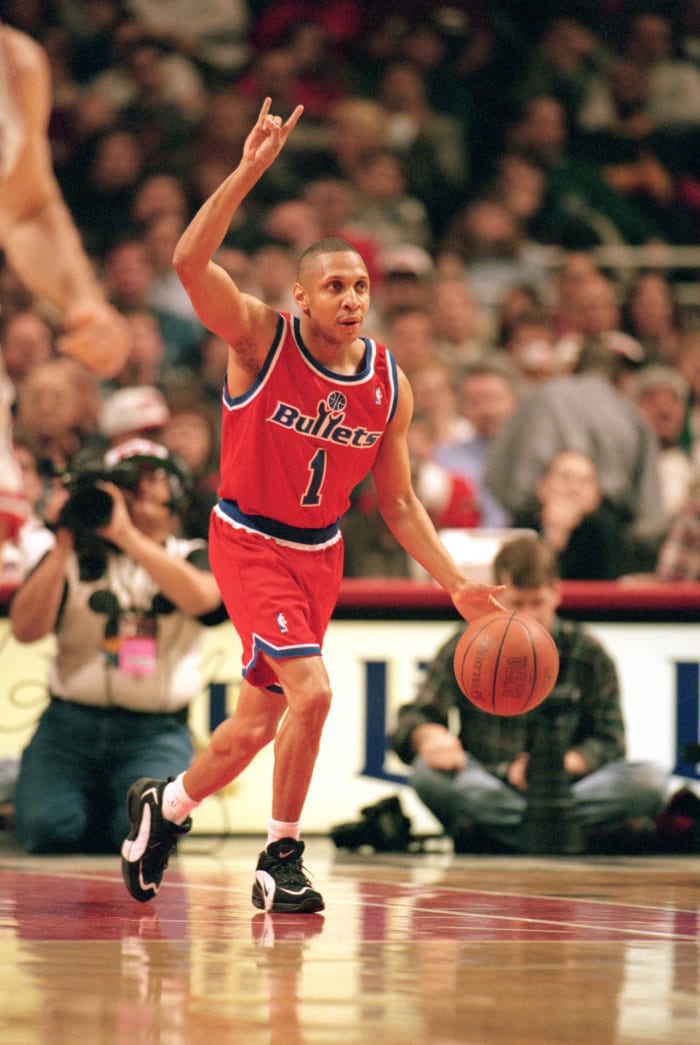
Born in Trenton, New Jersey, Greg Grant set multiple Division III scoring records while playing for Trenton State University (now The College of New Jersey), and the Phoenix Suns took a flier on the 5-foot-7 guard with the third-to-last pick of the 1989 NBA Draft. While Grant spent only one season with the Suns, he journeyed around the Association through the 1995-96 campaign. He appeared in 274 NBA games. In the 2010s, Grant spent five years as head coach at Trenton Central High School. As Rich Fisher wrote for The Trentonian, Grant took pride in having a 100 percent graduation rate among seniors who played under his watch. In December 2019, Trenton High retired Grant’s No. 10 jersey.
Mel Hirsch

For four decades, 5-foot-6 guard Mel Hirsch was the shortest man to ever play an American professional basketball game. During the 1946-47 season, Hirsch averaged 1.5 PPG, 0.8 AST, and 0.7 field goal attempts per game in 13 contests with the Boston Celtics. As Buddy Thomas of SouthCoastToday.com once humorously described, those numbers add up exactly to three; Hirsch’s jersey number.
Earl Boykins

According to a Sports Illustrated story written by Alexander Wolff, a Cleveland cop named Willie Williams once hid a 3-year-old boy in a gym bag to save money on a rec center entrance fee. That boy was Earl Boykins, who grew to all of 5-foot-5 and is, as of January 2020, the second-shortest player in NBA history. Boykins entered the NBA an undrafted free agent in 1998, and he bounced around several clubs through the 2002-03 campaign. He proved himself a reliable reserve by that offseason, and the Denver Nuggets rewarded him with a five-year contract, per Marc J. Spears of ESPN. Boykins averaged double-digits in points over each of the next four years, and, after a short stop in Europe, he returned to the Association from 2009 through 2012. In early 2020, Boykins worked as the director of student-athlete development for the Arkansas Razorbacks men’s basketball program.
Muggsy Bogues
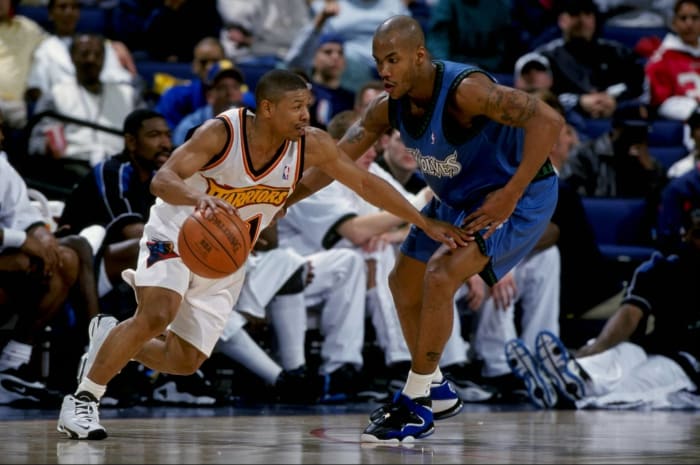
If you grew up in the 1980s and/or the 1990s, odds are you were a fan of Tyrone Curtis Bogues. The 5-foot-3 guard, who remains, as of the typing of this sentence, the shortest player in NBA history, wasn’t taller than many adolescents who played on outdoor courts and organized teams. His “Muggsy” nickname was cool, as was the story behind it . During the 1987-88 season, the Washington Bullets had both Bogues and Manute Bol, the tallest player in league history at the time, on the same roster, and those photos made for hilarious images. Bogues was never the top point guard in the league, not even during his best days with the Charlotte Hornets from 1989 through 1995. As of January 2020, though, Bogues held franchise records in assists, steals and assists per game. The combination of his stellar performances and small stature made him a household name and superstar worthy of landing roles in commercials and movies such as “Space Jam.” All should remember that Bogues once rejected Patrick Ewing. Whether he dunked during an NBA pregame warmup may never be known.
Zac Wassink is a football and futbol aficionado who is a PFWA member and is probably yelling about Tottenham Hotspur at the moment. Erik Lamela and Eli Manning apologist. Chanted for Matt Harvey to start the ninth inning of Game 5 of the 2015 World Series at Citi Field. Whoops. You can find him on Twitter at @ZacWassink.
More must-reads:
- Watch: Tyrese Maxey saves Sixers' season with two huge shots
- Report suggests Kevin Durant reuniting with former team isn't 'far-fetched'
- The 'NBA Coach of the Year' quiz
Breaking News
Customize Your Newsletter
 +
+
Get the latest news and rumors, customized to your favorite sports and teams. Emailed daily. Always free!
Use of this website (including any and all parts and
components) constitutes your acceptance of these
Terms of Service and Privacy Policy.

